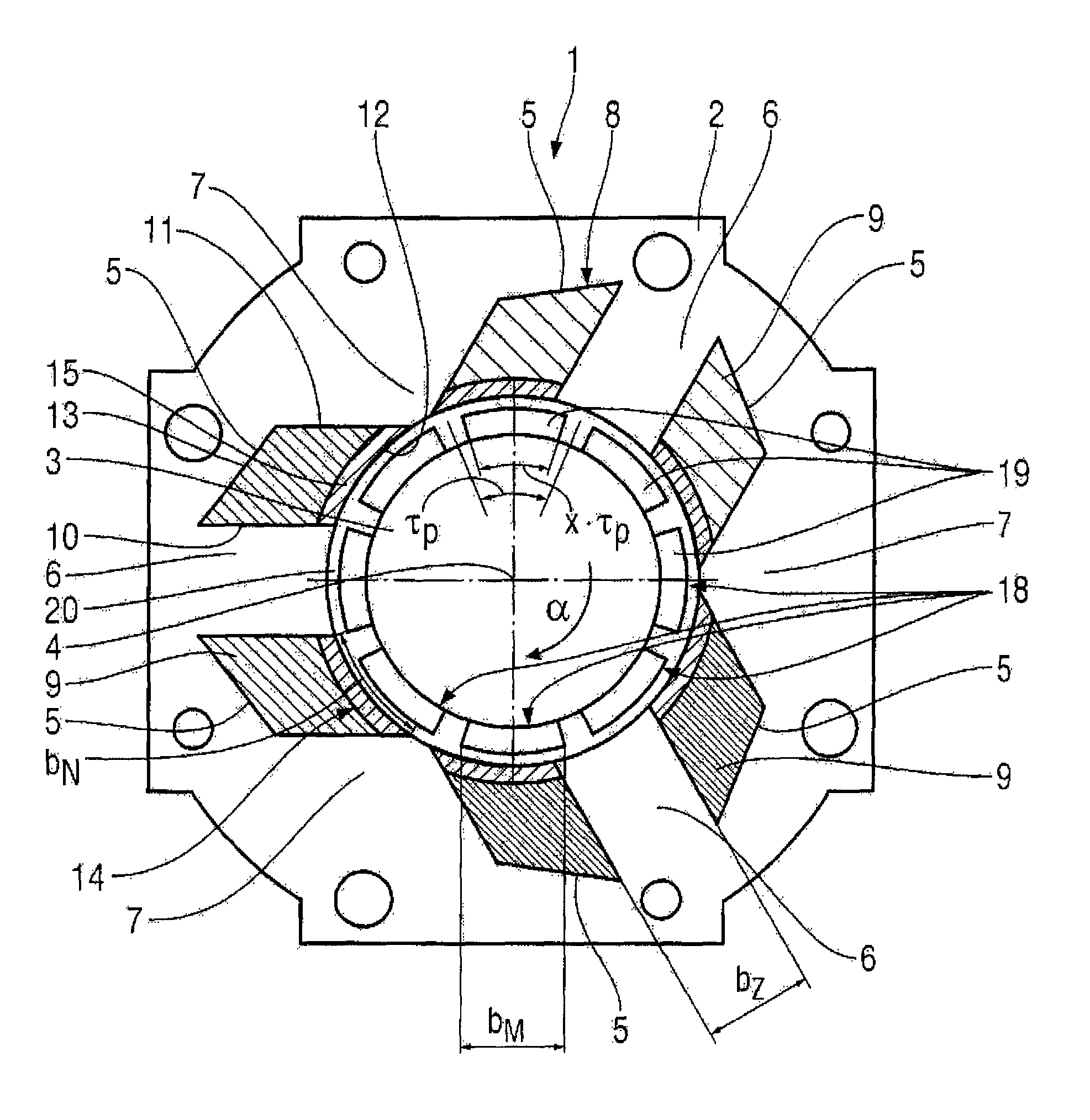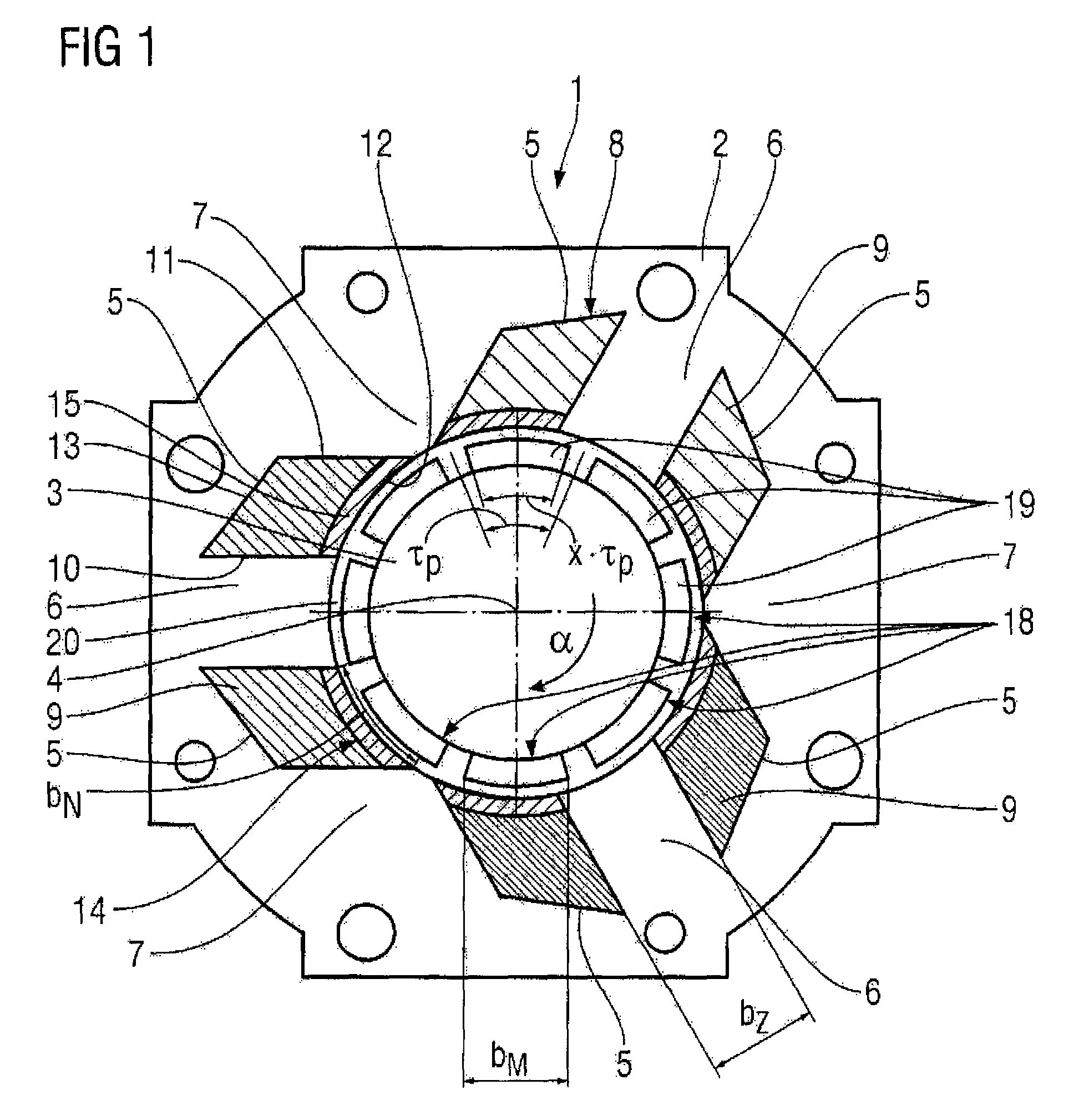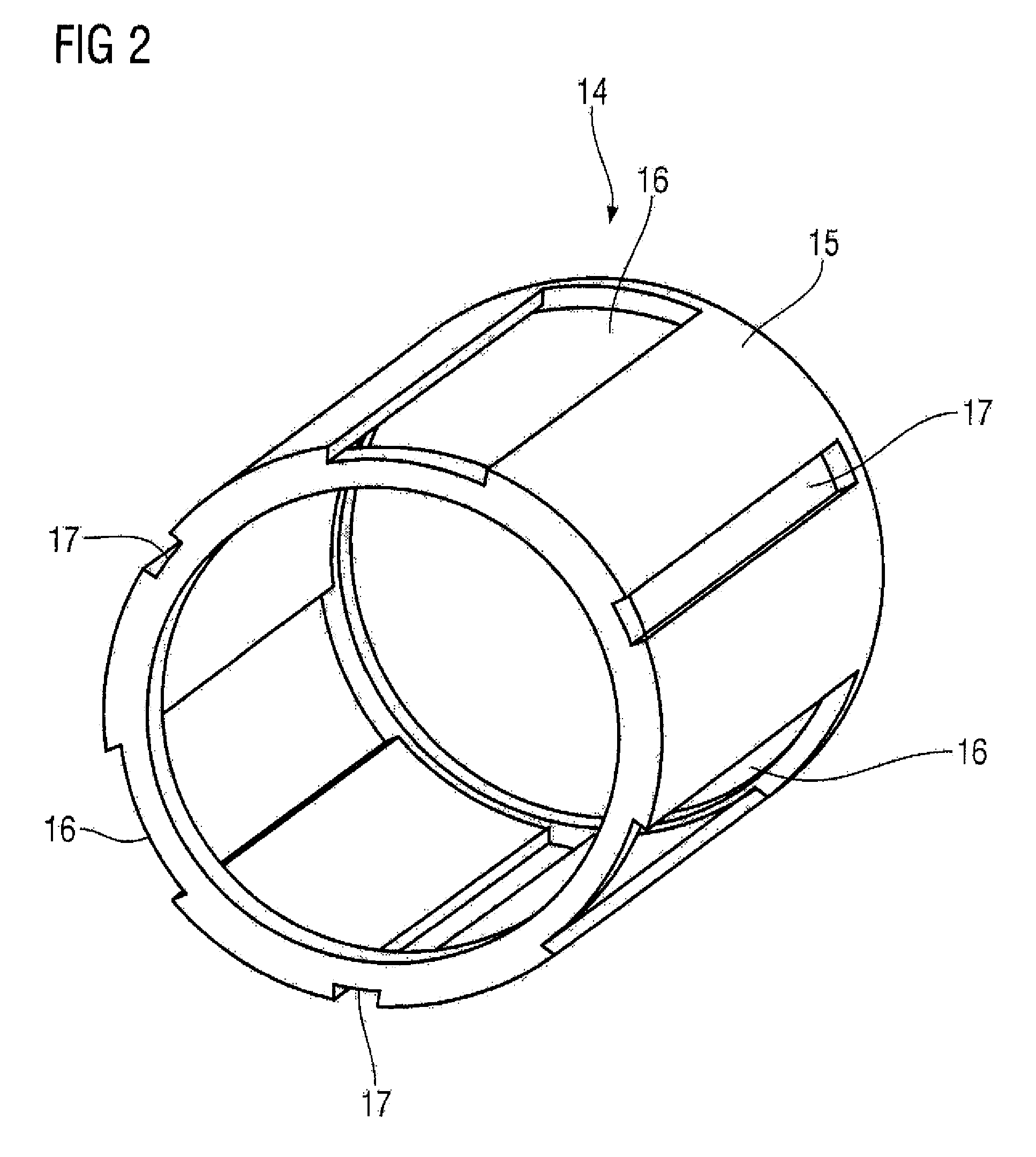Multipole permanent-magnet synchronous machine having tooth-wound coils
a permanent magnet, multi-pole technology, applied in the direction of horology, magnetism circuit shape/form/construction, instruments, etc., can solve the problem of not knowing the optimum embodiment which satisfies, and achieves high copper fill factor, cost-increasing threading technique, and simple manufacturing
- Summary
- Abstract
- Description
- Claims
- Application Information
AI Technical Summary
Benefits of technology
Problems solved by technology
Method used
Image
Examples
Embodiment Construction
[0021]Mutually corresponding parts have been provided with the same reference symbols in FIGS. 1 and 2.
[0022]FIG. 1 shows a cross-sectional illustration of a permanent-magnet synchronous machine 1 in the form of a motor. It contains a stator 2 having a cylindrical stator bore and a rotor 3, which is arranged in the stator bore and is mounted such that it can rotate about an axis of rotation 4. The rotor 3 is an internal rotor. The stator 2 has six slots 5 on its inner wall facing the rotor 3, between which slots in each case teeth 6 and 7 are formed. A yoke around the outside connects the teeth 6 and 7 to one another. A winding system 8 having three winding phases and having in total three tooth-wound coils 9 is arranged in the slots 5, each of which tooth-wound coils being shown by different hatching in FIG. 1.
[0023]Each of the tooth-wound coils 9 surrounds one of the teeth 6, with the result that a wound tooth 6 alternates with an unwound tooth 7 in the circumferential direction. ...
PUM
 Login to View More
Login to View More Abstract
Description
Claims
Application Information
 Login to View More
Login to View More - R&D
- Intellectual Property
- Life Sciences
- Materials
- Tech Scout
- Unparalleled Data Quality
- Higher Quality Content
- 60% Fewer Hallucinations
Browse by: Latest US Patents, China's latest patents, Technical Efficacy Thesaurus, Application Domain, Technology Topic, Popular Technical Reports.
© 2025 PatSnap. All rights reserved.Legal|Privacy policy|Modern Slavery Act Transparency Statement|Sitemap|About US| Contact US: help@patsnap.com



